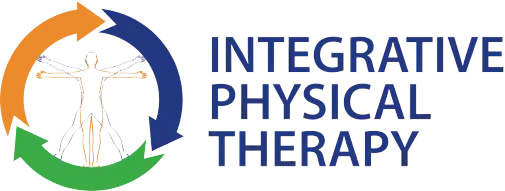Myofascial pain syndrome (MPS) is a condition that affects the muscles and fascia in the body. Fascia is a connective tissue that covers and supports the muscles. MPS is characterized by the presence of trigger points in the muscles, which are painful and sensitive to pressure. Trigger points can develop due to a variety of factors, including overuse, trauma, or poor posture.
Dry needling can help to relieve myofascial pain by targeting these trigger points. The technique involves the insertion of thin needles into the skin and underlying tissues. The needles are inserted directly into the trigger points, which can be located through palpation or ultrasound imaging.
Once the needles are inserted, they are manipulated to create a twitch response in the muscles. This twitch response is a brief contraction of the muscle fibers, which can help to release tension and reduce pain. The needles are typically left in place for several minutes, during which time the patient may experience a sensation of heaviness or tingling in the affected area.
Dry needling can be an effective treatment for myofascial pain because it targets the underlying cause of the pain. Unlike pain medications, which only provide temporary relief, dry needling can help to release tension in the muscles and reduce the presence of trigger points. By addressing the root cause of the pain, dry needling can provide long-term relief from myofascial pain.
In addition to relieving pain, dry needling can also help to improve mobility and range of motion. When the muscles are tight and tense, they can limit the movement of the joints and lead to stiffness and discomfort. By releasing tension in the muscles, dry needling can help to improve joint mobility and flexibility.
Dry needling can also help to improve circulation in the affected area. When the muscles are tense, they can compress blood vessels and reduce blood flow to the area. This can lead to inflammation and pain. By releasing tension in the muscles, dry needling can help to increase blood flow and reduce inflammation, which can help to reduce pain and promote healing.
Dry needling is a safe and effective treatment for myofascial pain when performed by a trained and licensed practitioner. Patients may experience some mild discomfort during the procedure, but this typically resolves quickly. Some patients may also experience minor bruising or soreness in the affected area, but this is a normal part of the healing process and should resolve within a few days.
Overall, dry needling can be an effective treatment for myofascial pain. It targets the underlying cause of the pain by releasing tension in the muscles and reducing the presence of trigger points. By providing long-term relief from pain, improving mobility and range of motion, and promoting healing, dry needling can help to improve quality of life for patients with myofascial pain syndrome.
Myofascial pain syndrome is a chronic pain disorder that affects the muscles and the surrounding connective tissue called fascia. This condition is characterized by the presence of trigger points, which are hyperirritable spots within the muscle that can cause localized pain and referred pain to other areas of the body. Dry needling is a treatment technique that has been shown to be effective in reducing the pain associated with myofascial trigger points. In this blog post, we will explore why dry needling might help myofascial pain.
What is Dry Needling?
Dry needling is a treatment technique used to relieve pain and muscle tension. It involves inserting a thin needle into the skin and muscle tissue without injecting any medication or solution. The needle is inserted into the myofascial trigger point, which is a hyperirritable spot within a muscle that is painful to the touch and can refer pain to other areas of the body.
Dry needling is based on the theory that when a needle is inserted into a trigger point, it can cause a local twitch response. This twitch response is a reflex contraction of the muscle fiber, which can help to release tension and improve blood flow to the area. The goal of dry needling is to reduce pain and improve range of motion by releasing the trigger point and restoring proper muscle function.
How Does Dry Needling Help Myofascial Pain?
Dry needling can help myofascial pain in several ways:
Relieves Trigger Point Pain: Dry needling targets the trigger points that are causing the pain. The insertion of the needle into the trigger point can help to release the tension in the muscle, which can reduce pain and improve mobility.
Improves Blood Flow: When a needle is inserted into a trigger point, it can cause a local inflammatory response. This inflammatory response can increase blood flow to the area, which can help to promote healing and reduce pain.
Releases Muscle Knots: Myofascial trigger points are also known as muscle knots. Dry needling can help to release these knots by causing a local twitch response in the muscle fibers. This twitch response can help to relax the muscle and reduce tension.
Improves Range of Motion: Myofascial pain can restrict movement and limit range of motion. Dry needling can help to improve range of motion by reducing pain and tension in the muscles.
What to Expect During a Dry Needling Session?
Before the treatment, the therapist will conduct a thorough examination to identify the trigger points that are causing the pain. Once the trigger points are identified, the therapist will insert the needles into the muscle tissue. You may feel a slight discomfort or a twitch response when the needle is inserted. The therapist may move the needle around in the muscle tissue to help release tension.
The length of the treatment session will vary depending on the number of trigger points being treated and the severity of the pain. Most sessions last between 15 and 30 minutes. After the treatment, you may feel soreness or mild discomfort in the treated area. This discomfort should subside within a few hours to a day after the treatment.
Is Dry Needling Safe?
Dry needling is generally safe when performed by a licensed and trained therapist. The needles used in dry needling are sterile and single-use, which helps to minimize the risk of infection. However, there are some risks associated with dry needling, including:
Soreness and Bruising: You may experience some soreness and bruising at the insertion site.
Nerve Damage: There is a risk of nerve damage if the needle is inserted too deeply or into a nerve.
Pneumothorax: There is a very small risk of puncturing the lung, which can lead to a collapsed lung.
Infection: Although the risk of infection is low, there is still a small risk of infection at the insertion site.
Bleeding: In rare cases, dry needling can cause bleeding at the insertion site.
It is important to discuss the potential risks and benefits of dry needling with your therapist before starting the treatment. Your therapist should also have a thorough understanding of your medical history and any underlying health conditions that may increase your risk of complications.
Who Can Benefit from Dry Needling?
Dry needling can be beneficial for individuals who suffer from myofascial pain syndrome, as well as other musculoskeletal conditions such as:
- Tension headaches
- Low back pain
- Tennis elbow
- Plantar fasciitis
- Neck pain
- Shoulder pain
- Knee pain
Dry needling can be used in combination with other treatments such as physical therapy, massage, and exercise to help relieve pain and improve mobility.
Conclusion
Dry needling is a safe and effective treatment technique for myofascial pain syndrome and other musculoskeletal conditions. It works by targeting the trigger points that are causing the pain and releasing tension in the muscle fibers. Dry needling can also help to improve blood flow, release muscle knots, and improve range of motion.

